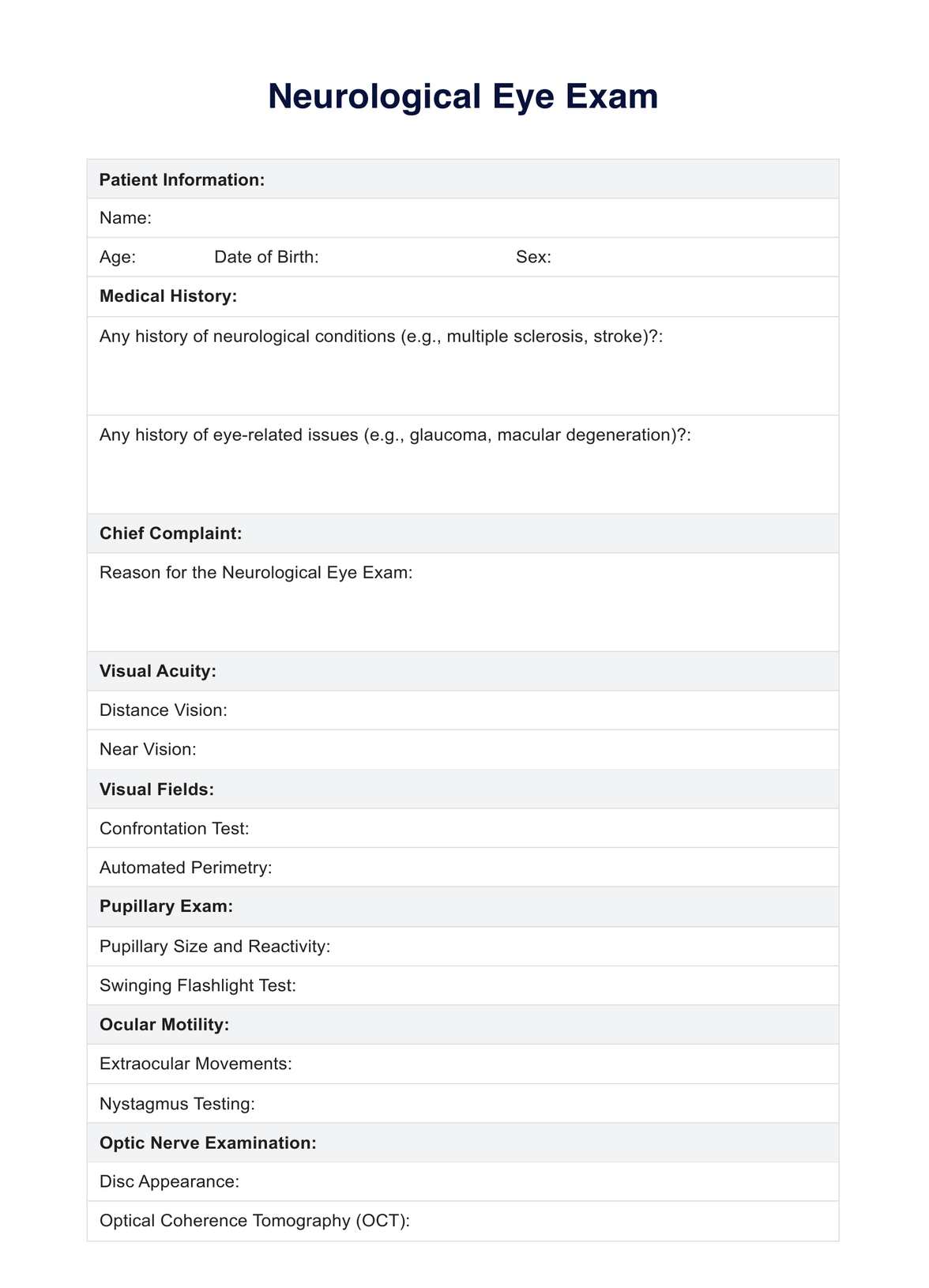A neuro eye exam goes beyond a regular eye exam by focusing on the intricate connection between the eyes and the neurological system. While a routine eye exam primarily assesses visual acuity and eye health, a neuro eye exam delves into aspects like cranial nerve function, depth perception, and neurological conditions affecting vision.

Neuro Eye Exam
A neuro eye exam is a comprehensive assessment of the visual system to diagnose and manage neurological conditions. Download Carepatron's neuro eye exam PDF to learn more about it.
Neuro Eye Exam Template
Commonly asked questions
A neurological exam evaluates the functioning of the nervous system, including the brain, spinal cord, and peripheral nerves. In the context of a neuro eye exam, specific attention is given to cranial nerves, optic nerve function, and any signs of neurological disorders impacting vision or eye movement.
During a neuro eye exam, patients can expect a thorough assessment of visual function, including tests for depth perception, visible field defects, and cranial nerve function. The examination may involve specialized equipment such as a slit lamp biomicroscope and pupillometer. The process aims to identify neurological issues affecting the eyes and ensure a comprehensive understanding of the patient's visual health.
EHR and practice management software
Get started for free
*No credit card required
Free
$0/usd
Unlimited clients
Telehealth
1GB of storage
Client portal text
Automated billing and online payments











